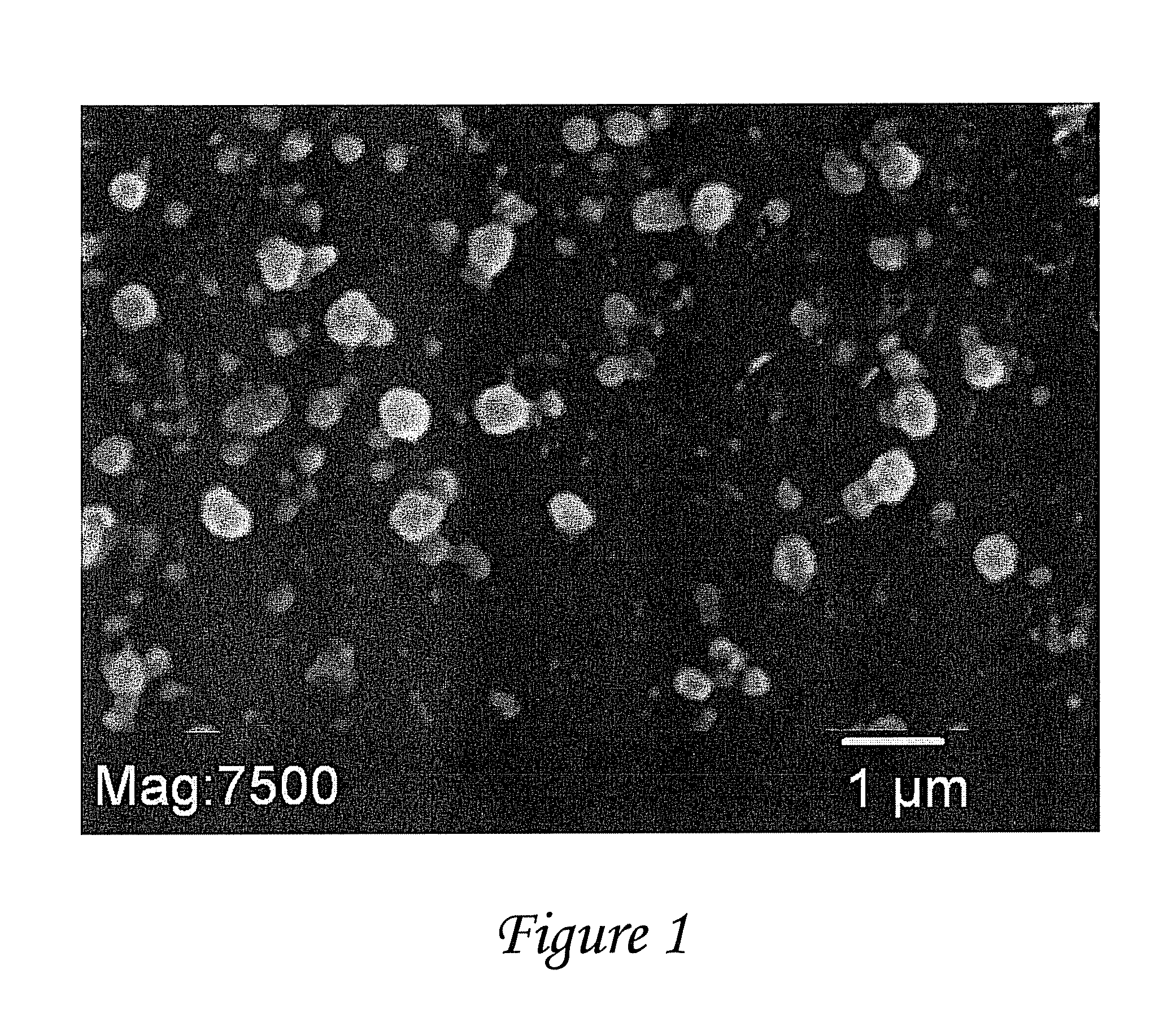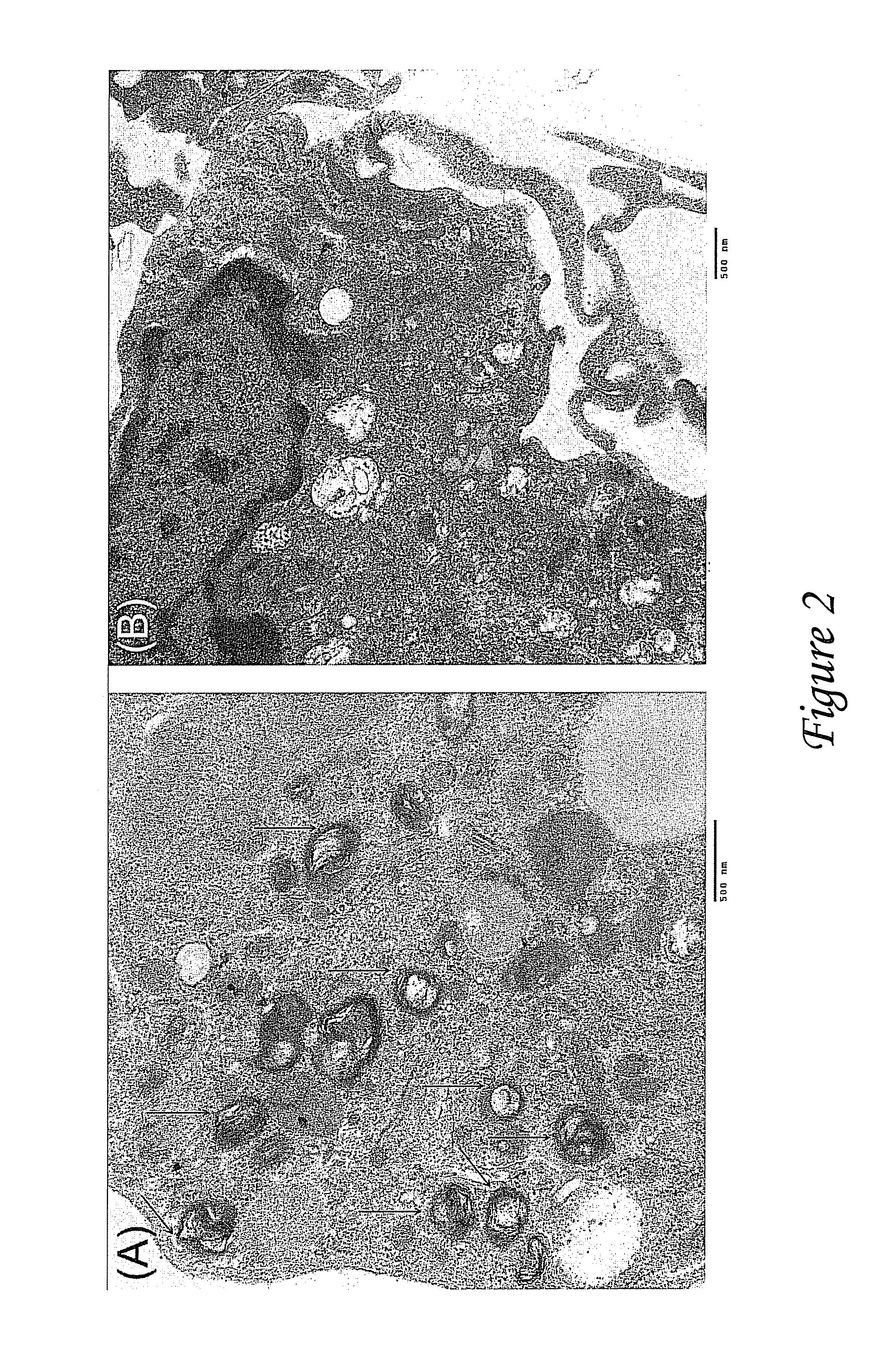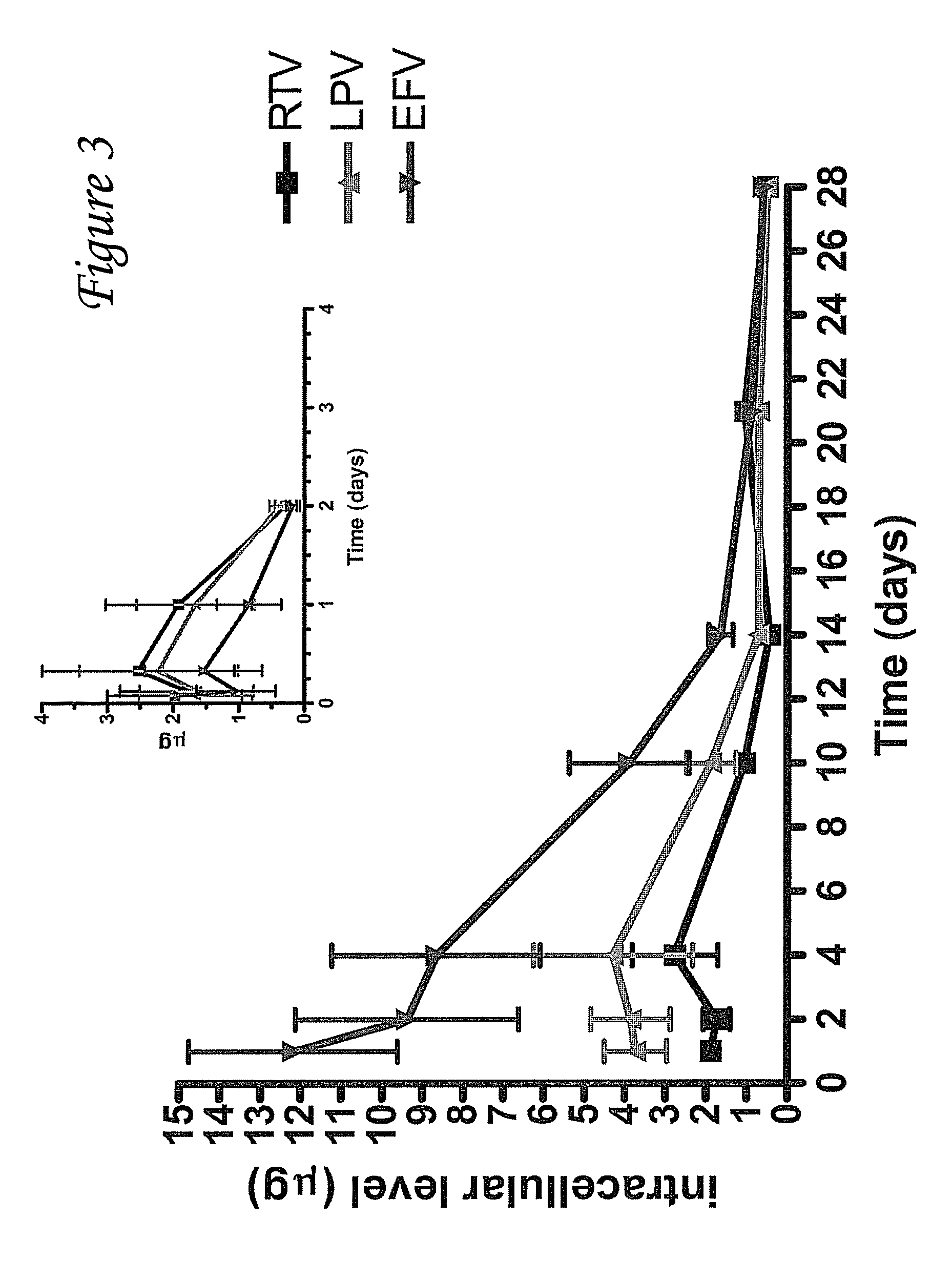Nanoparticles and methods of use
a technology of nanoparticles and nanoparticles, applied in the field of nanoparticles and methods of use, can solve the problems of compromising the achievement of long-term hiv-1 suppression in infected patients, limited global access, and difficult eradication of hiv-1 by antiretroviral therapy
- Summary
- Abstract
- Description
- Claims
- Application Information
AI Technical Summary
Benefits of technology
Problems solved by technology
Method used
Image
Examples
example 1
[0066]Combination antiretroviral therapy (ART) continues to be the mainstay for HIV treatment. HIV-1 hidden in bodily sanctuaries, such as brain and testes, leads to an inaccessability of adequate drugs to these areas. Nanoparticles may be a drug delivery option to deliver ART into these sanctuaries. Poly-(lactic-co-glycolic acid) (PLGA) nanoparticles (NPs) containing ritonavir (RTV), lopinavir (LPV), and efavirenz (EFV) were fabricated using multiple emulsion-solvent evaporation procedure. The nanoparticles were characterized by electron microscopy and zeta potential and the in vitro release of antiretroviral therapy from the nanoparticles incubated with peripheral blood mononuclear cells (PBMCs) over 28 days was evaluated. Nanoparticles size was 262+53.9 nm and zeta potential was −30+12.4. ART loading averaged 7% (w / v). ART (100 μg of each drug in nanoparticles) levels were determined in PBMCs after culture. Intracellular peak antiretroviral therapy levels from nanoparticles (day ...
example 2
Pharmacokinetics of Antiretroviral Release from PLGA Nanoparticles in Mice
[0086]Combination antiretroviral drugs (RTV, LPV, EFV) were fabricated into poly (DL-lactide-co-glycolide) (PLGA) nanoparticles (NPs) for sustained delivery. A comparison of free drugs (500 μg each) to antiretroviral (AR) NPs time course in mice is presented here. PLGA NP containing RTV, LPV, and EFV were fabricated using a water-in-oil-in-water multiple emulsion. The particles were weighed, reconstituted with PBS and 500 μg was injected intraperitoneally (IP) into male BALB / c mice. At specific times, (free: 0.08, 0.167, 0.25, 0.33, 1, 2 and 3 days; antiretroviral nanoparticles: 0.167, 0.33, 1, 2, 4, 7, 14, 21, 28, and 35 days) mice (n=3 / time point) were euthanized and selected organs and serum were harvested for antiretroviral drug levels. Results are presented as mean±SEM. Peak antiretroviral drug levels in the serum were found to be at 4 hours post-injection (RTV 3.2±1.5, LPV 3.3±1.6, EFV 3.5±1.9 μg / L). Ser...
PUM
| Property | Measurement | Unit |
|---|---|---|
| size | aaaaa | aaaaa |
| size | aaaaa | aaaaa |
| concentration | aaaaa | aaaaa |
Abstract
Description
Claims
Application Information
 Login to View More
Login to View More - R&D
- Intellectual Property
- Life Sciences
- Materials
- Tech Scout
- Unparalleled Data Quality
- Higher Quality Content
- 60% Fewer Hallucinations
Browse by: Latest US Patents, China's latest patents, Technical Efficacy Thesaurus, Application Domain, Technology Topic, Popular Technical Reports.
© 2025 PatSnap. All rights reserved.Legal|Privacy policy|Modern Slavery Act Transparency Statement|Sitemap|About US| Contact US: help@patsnap.com



